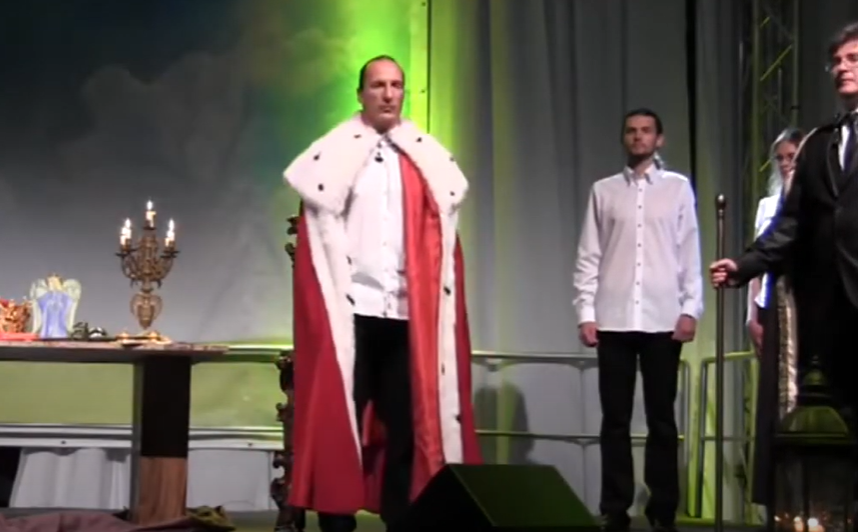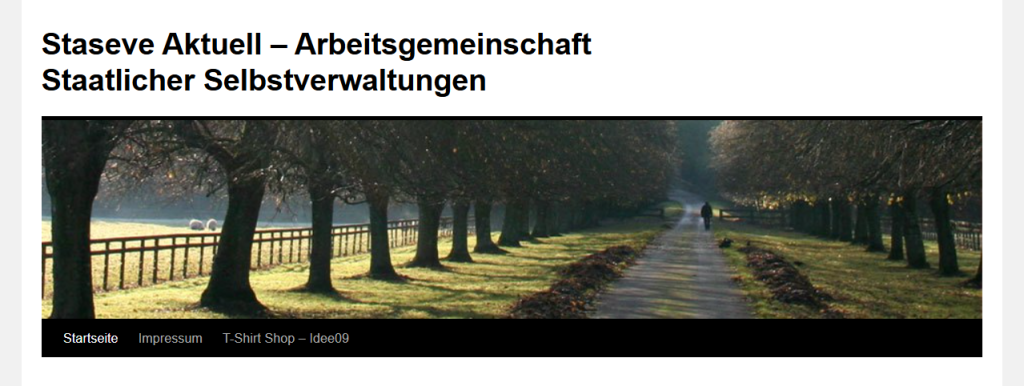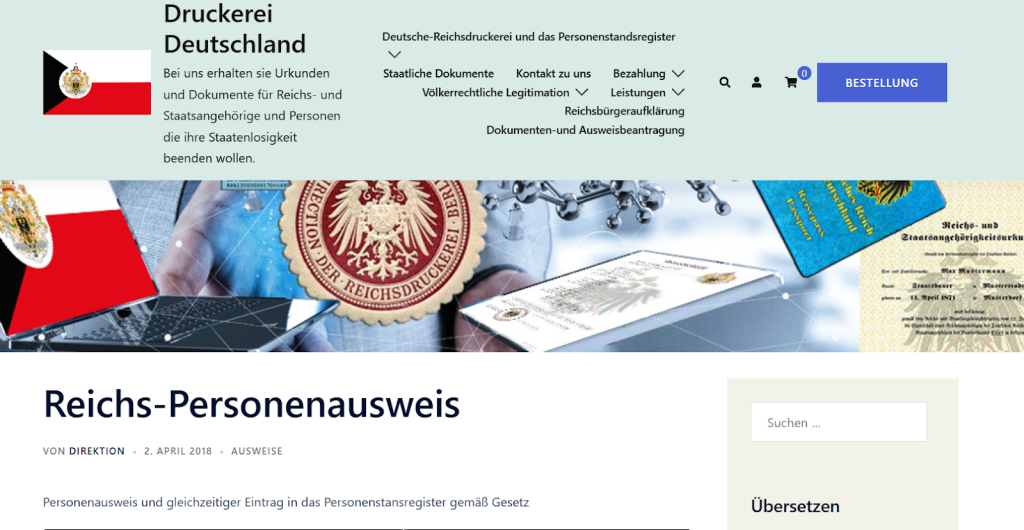Introduction
Online radicalisation studies and P/CVE research, more broadly, tend to focus primarily on younger individuals and cases. However, the radicalisation of middle-aged and elderly people remains largely overlooked despite their active involvement in nearly all extremist movements. This Insight advocates for a more nuanced understanding of extremism and ageing, emphasising the need for radicalisation prevention strategies geared towards those born as Digital Immigrants, such as Baby Boomers and Generation X. These generations did not grow up in a digitised world, and their education largely did not include critical media studies. Among others, this factor makes them prone to misinformation consumption online. Further, this Insight discusses the topic of Digital Immigrants and digital media, looking at the example of the German Reich Citizens Movement, which has a very specific age structure and is characterised by the relatively late radicalisation of its adherents. The movement, which predates the digital age, now primarily relies on the internet for communication, spreading its ideology, and mobilising action against the state and governmental authorities.
The Reich Citizens Movement: History and Background
The Reich Citizens Movement (Reichsbürgerbewegung in German) is a decentralised movement of several groups and individuals in Germany who reject the legitimacy of the Federal Republic of Germany. Connections in these groups are usually quite unstable. The Reich Citizens Movement is a pluralistic movement which consists of monarchists who support the restoration of either the German or the Holy Roman Empire. There are neo-Nazi aspects to the movement as well. Overall, there are several disagreements within the movement about what kind of empire they believe continues to exist and/or they want to (re-)establish, who is in charge of this entity, why and how.
The history of the Reich Citizens Movement usually dates back to the “Commissary Reich Government” in 1985 by Wolfgang Gerhard Günter Ebel. The adherents of this movement believe they must question the actions of state authorities whose existence and actions they regard as being against their interpretation of the law. Reich Citizen followers are known for writing numerous letters and emails to state authorities to give the impression they engage legally in the democratic process with the state and its laws. However, they are anti-democratic, as their ideology and actions work to undermine the German state. Their ideology is characterised by conspiracy narratives, a self-defined natural law, antisemitism, racism and esoterism. Narratives in the Reich Citizens Movement also show influences of pro-Russian conspiracy narratives which intend to destabilise German democratic structures. And, a relatively high number of adherents of this movement are interested in or own weapons.
The Reich Citizens Movement is an extremist movement monitored by the German Interior Intelligence Service (Verfassungsschutz in German, the Federal Office for the Protection of the Constitution in English). According to the Federal Office for the Protection of the Constitution, about 25,000 people in Germany belong to the Reich Citizens Movement (as of June 2023). Around 5% (roughly 1,350 individuals) also align with the right-wing extremist spectrum due to ideological overlaps, while about 10% (around 2,500 individuals) either engage in violence or justify its use.
In 2022, a Reich Citizens group was detained for plotting to overthrow the German government in a violent coup. The group sought to spread chaos, foment civil war, and even kidnap the German health minister because of their COVID-19 policies. Former members of the German army, a judge, and more were involved. The search and arrests for those involved formed the largest anti-extremist raid in Germany’s history.
Although the Reich Citizens Movement shares some ideological overlaps with right-wing extremism, it has distinct characteristics that set it apart as its own movement. Right-wing extremist ideology is primarily focused on racial supremacy, nationalism, racism, antisemitism and social Darwinism. In contrast, the Reich Citizens focus mainly on rejecting the legitimacy of the German state. The group seeks to establish its state-like entities – such as self-declared kingdoms – and assign themselves roles within these structures, including minister, chancellor or king.
The Movement’s Age Demographics and Instances of Violence
The Reich Citizens Movement has a distinct demographic profile, with most adherents being older than those in other extremist movements and predominantly male. The radicalisation process itself also takes place at an older age; the Federal Office for the Protection of the Constitution in Baden-Wuerttemberg, which has examined the movement’s age structure in Baden-Wuerttemberg (a federal state in Germany), has noted that most of the members are between 50 and 59 years old. Tobias Müller and Dennis Hebbelmann point out that a majority of this group also seem to radicalise around this age, and that one of the reasons for the radicalisation is rooted in their age. However, adherents do not only have a certain extremist attitude towards the state and its authorities but there is also an unusually high number of people in this age group who commit acts of violence. Verena Fiebig and Daniel Köhler, from the Kompetenzzentrum gegen Extremismus (konex) of the Federal Office for the Protection of the Constitution in Baden-Wuerttemberg, emphasise the fact that an unusually high number of violent criminals over the age of 60 are active in this movement. They describe this aspect as a criminological specificity for this movement.
Digital Immigrants in the Information Age
According to the study SIM (Senior citizens, information, media) from 2021, 92% of people between 60 and 69 years, 82% of people between 70 and 79 years and 51% of people over 80 years are online in Germany. Moreover, current studies show that older people are more prone to disinformation online than young people. One example is the 2021 Quelle Internet study on the media literacy of German people, which notes that the ability to critically assess online information declines with age. While the youngest demographic (18-29 years old) has the highest numbers of digital literacy, the 60-69 year-olds receive fewer points, and the people over 70 receive even less. It remarks further that studies in the US show that people over 60 are more likely to interact with disinformation and, furthermore, to spread it. The reason could be a lack of media literacy.
In 2023, the research project SMIDGE (Social Media Narratives: Addressing Extremism in Middle Age) was launched. This project focuses on individuals aged 45-65 and addresses online conspiracy theories, misinformation, and extremism in this age group. The reasons behind radicalisation are multifaceted and can occur across all age groups. However, a lack of critical media competency is a key factor in this context, as it makes individuals more susceptible to extremist messaging and online misinformation.
From Paper Terrorism to Online Extremism
Like so many extremist groups, social media has enhanced the network of the Reich Citizen movement, the spread of its ideology, and the recruitment of new members. Members are active on multiple platforms, each used with different strategies and intentions. Before the digital age, Reich Citizens could rely mainly on written pamphlets (therefore the term “paper terrorism”) against state authorities to question their legal steps or to insult government employees, the digital world offers them many more possibilities. Nowadays, Reich Citizens publish their own “TV shows” on YouTube because they do not trust mainstream media. A prominent “news channel” within the Reich Citizens scene is the Austrian website AUF1, which promotes right-wing extremist ideology, conspiracy theories, and pro-Putin narratives.

Figure 1. Screenshot from an AUF1- “news show”, reposted by Reich Citizen Peter Frühwald.
So-called ‘Reich Citizens maintain their own websites, such as those of Peter Fitzek – an ideological leader of the movement – who established his own “kingdom” and are active on various social media channels.

Figure 2. Screenshot from the “constitution” of Peter Fitzek’s “kingdom” streamed on YouTube.
For example, another ideological proponent is Peter Frühwald. Frühwald declared the “Republic Free Germany” and was elected “president” by his followers. He has a blog and is present on Gab, Gettr, and Telegram.

Figure 3. Screenshot from Frühwald’s Weblog, in English: “Association of Public Self-Administration.”

Figure 4. A Telegram channel by Peter Frühwald. He describes it as an alternative information channel (which reflects Reich Citizens’ distrust in the traditional media) and calls his followers for financial support.
In general, Reich Citizens are quite innovative at raising funds to support their ideological endeavours. Some members offer seminars to spread their extremist anti-government views and sell their own documents for their self-declared legal entities. This is because they do not recognise official German passports or other state-issued documents and do not consider themselves citizens of Germany.

Figure 5. Screenshot of an online shop by the Reich Citizen Erhard Lorenz where he sells “legal documents.”

Figure 6. An advertisement on Amazon for a book by Peter Frühwald reflects on key elements of Reich Citizens’ ideology. The book distinguishes between “human” and “person”, suggesting that the German state exercises control over individuals through legal definitions. It claims to reveal how the state exerts authority over its citizens and offers ways to resist this system. This is an example of Reich Citizens’ broader rejection of the German state and its legal framework, as well as their belief that they possess hidden “truths” that set them apart from the general population.
Reich Citizens use social media not just to spread ideology but also to make calls to action. For instance, a Reich Citizen from Bavaria used his Telegram channel to encourage his followers to bombard authorities with emails and phone calls. His followers reacted by insulting, harassing and threatening government employees. Another example was Torsten Gerhard Jansen (d. 2023), who declared himself the so-called Commander of the still-existing SHAEF (the headquarters of the Commander of Allied forces in northwest Europe from 1943 until the end of World War II) and was believed to have been installed in this position by US-president Donald Trump. He claimed to have the authority to impose the death penalty by shooting and hanging those who disagreed with him.
At the outset of the movement, Reich Citizens were often dismissed as harmless eccentrics and not taken seriously. However, adherents’ willingness to translate their views into (sometimes violent) action underscores the importance of recognising this movement as a serious threat.
Conclusions and Recommendations
There is a scarcity of studies which focus on middle-aged and older-aged adult extremists – especially as it relates to their use of the internet. Further studies are needed to examine the age structure of the Reich Citizens Movement and other extremist groups. This could help identify push and pull factors for prevention and deradicalisation relevant across different age groups. They should include a more reflected view of ageing as a whole and the different steps between middle-aged, older, and elderly over 80. These groups are at different life stages, with varying access to media, differing levels of media literacy, distinct interests, and different push and pull factors related to extremism.
It is also necessary to develop concepts of prevention, especially for middle-aged and older people who did not benefit from media education in school. They should be empowered to analyse information on the internet critically, to differentiate between fake news and facts, and to recognise conspiracy theories. People from these age groups should be included in conceptualising possibilities in prevention.
This Insight has also highlighted the need for lifelong radicalisation prevention, as extremist groups are early adopters of new technologies, making it essential to continuously refresh one’s knowledge. Therefore, radicalisation prevention should not only target young people. It is necessary not to belittle or trivialise the extremism of middle-aged or elderly age groups. Movements like the Reich Citizens Movement show that these people are willing and capable of transferring their beliefs into violent action.
It is also important to develop strategies to protect older people and those with lower media competency from disinformation. In this context, it is highly regrettable that Meta is to abolish its fact-checkers in the US – affecting both Facebook and Instagram – which are used by billions of people around the world.
In this context, more research is necessary related to AI, and how it can potentially support the protection of older people from disinformation on social media platforms. Perhaps tech companies could develop AI that could be applied to fact-checking, moderate calls for violence, or maybe even design chatbots designed to curb the radicalisation of older age groups. (The usage of AI, of course, has to be in accordance with the EU AI Act and – in the case of the German Reich Citizens Movement – German laws for the protection of personal rights.) Methodologies should be applied, taking into consideration the presuppositions and needs of these age groups in line with demographic changes.
